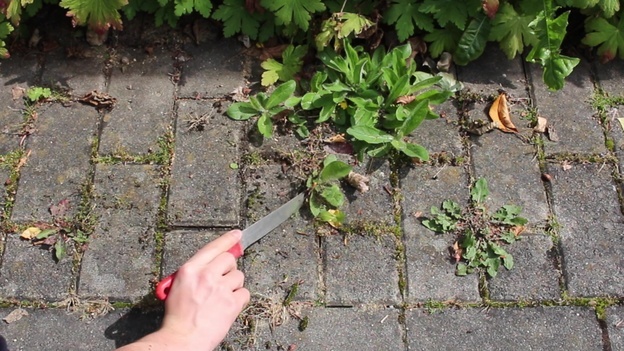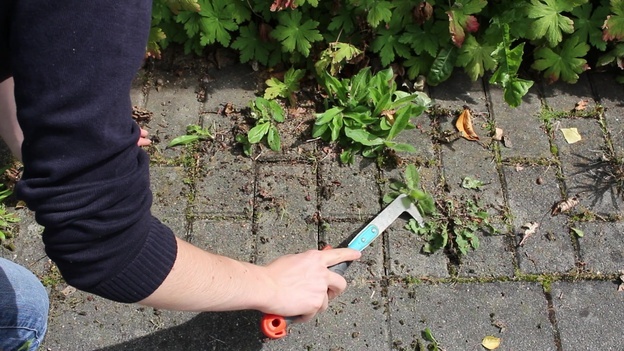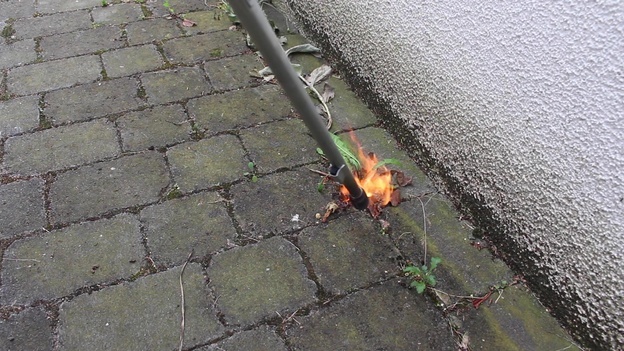VIDEO: Remove weeds between cobblestones
A driveway or garden path overgrown by dandelions and co. Is not a pretty sight. If you do that weed If you don't remove it soon enough, this overgrown sight will soon turn into real damage to your paths.
Remove weeds in an environmentally friendly way
Not every weed control should be right on your patch. Many methods are environmentally unfriendly and harm not only weeds, but also living things. Unfortunately, old, well-known home remedies have been banned for several years. Therefore ignore the following advice.
Salt used to be sprinkled on the cracks between the paving stones and swept between the cracks. Salt is very effective, but it spreads in the soil and makes it too salty. It is dissolved by rainwater and washed far beyond the area.
The same applies to treatment with a saline solution and substances with vinegar such as vinegar water and vinegar cleaners. If they are used several times with salt, they cause great damage and are not permitted on paved surfaces. There is a risk of fines because it acts as a herbicide and gets into the groundwater. You can use it on open areas such as flower beds. Make sure that you want plants to have enough space, otherwise they will suffer too.
Herbicides must not be used on surfaces such as cobblestones. If you apply for a permit so that you can buy them in the first place, you will be instructed that herbicides can only be used on open areas by knowledgeable persons.
It happens again and again that joint sand for paving stones washes out. Here …
Use a kitchen knife and scraper to fight the weeds
Before resorting to prohibited substances and harming living beings, simply reach into the kitchen drawer. There you will find the most effective weed killer - the kitchen knife. You get deep between the joints of the paving stones and can cut out the weeds and roots. It's a little more strenuous than spilling salt water, but it's just as effective as a result.

A joint scraper from the hardware store serves the same purpose. It has a sturdy handle and the blade is slightly thicker than a kitchen knife. They pull up the weeds and don't cut them off.

Correctly insert scarfing devices between the paving stones
Flaming the weeds is associated with slightly higher costs, but not so strenuous and time-saving. There are special scarfing devices. They consist of a tube with a flame attachment that is connected to a gas cartridge. Simply hold the flame attachment over the cracks and burn the weeds off in this way.

After that, all you have to do is sweep away the charred remains.
Prevent weeds
Once you've finished removing the weeds, you want the result to last a long time. Prevention is important. Joint sand or dansand are the right choice. Otherwise the weeds will come back every year.
In contrast to mortar, sand is permeable to water. Rainwater runs off and it does not have a strong impact on the environment, but prevents unwanted plants from growing in the long term. The sand is distributed between the joints and the action is effectively taken. When it has been worn away by the wind, it is renewed.
The next time you lay stones for the paving, it will help to sprinkle a layer of sharp-edged gravel underneath. This also curbs growth in the long term. So you can enjoy long-term success right from the start.
Removing weeds from between the joints is not difficult. It works best with a kitchen knife, grout or flame scarfing device. Joint sand helps keep your garden looking neat for a long time.

